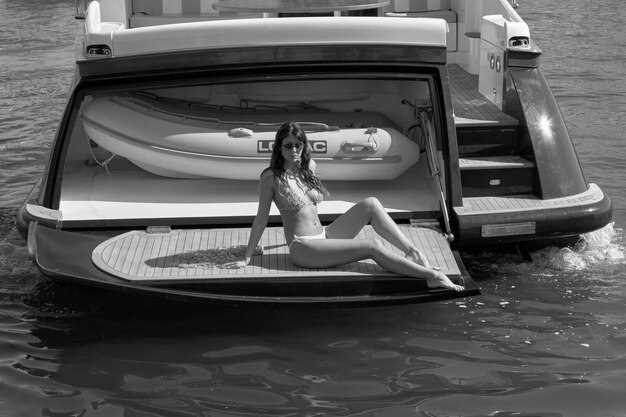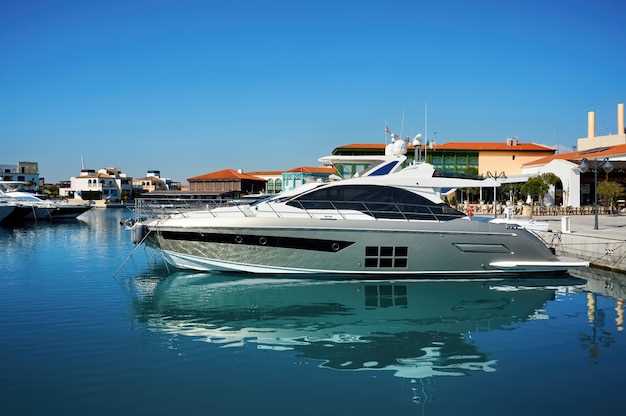
When it comes to choosing the ideal boat for your adventures on the water, the debate between cuddy cabins and cabin cruisers is often at the forefront of recreational boating discussions. Both types of vessels offer unique advantages and characteristics that cater to different boating needs and preferences. This detailed comparison will explore the key features, benefits, and potential drawbacks of each option to help you determine which one reigns supreme in the world of watercraft.
A cuddy cabin is typically recognized for its compact design and versatile usage. It usually features a small enclosed cabin that provides basic shelter and sleeping accommodations, making it an excellent choice for day trips and weekend getaways. Despite its limited space, this type of boat allows for easy maneuverability and often comes equipped with powerful engines, perfect for swift excursions across lakes or coastal waters.
In contrast, a cabin cruiser is geared towards those seeking a more luxurious experience. These vessels are larger and offer more amenities, including spacious sleeping quarters, full kitchens, and bathrooms. Cabin cruisers are designed for longer journeys, providing comfort and convenience that can cater to family outings and extended vacations on the water. However, their size can lead to more complex handling and increased maintenance requirements.
Ultimately, the decision between a cuddy cabin and a cabin cruiser will hinge on your individual boating lifestyle, preferences, and the type of experiences you wish to pursue on the water. Let’s dive deeper into the specifics of each boat type to identify which one might be the superior choice for your needs.
Cuddy Cabin vs Cabin Cruiser: Which One is Superior?
When comparing a cuddy cabin to a cabin cruiser, several key factors must be considered to determine which vessel is superior for your needs. Both options offer unique features, but their design and intended use differ significantly.
The cuddy cabin typically features:
- A small enclosed area at the bow, providing shelter and sleeping space.
- Compact size, making it easier to maneuver and trailer.
- Versatility for day trips and short overnight excursions.
- Cost-effectiveness, often being less expensive than larger cruisers.
On the other hand, cabin cruisers are characterized by:
- More spacious living quarters, often equipped with full kitchens and bathrooms.
- Greater stability and comfort on longer journeys.
- A wider range of onboard amenities, making extended trips more enjoyable.
- The ability to handle rougher sea conditions due to larger hulls and increased horsepower.
In terms of usage, the ideal choice depends on the intended activities:
- If you plan to engage in fishing, water sports, or short day trips, a cuddy cabin may be the perfect fit.
- If you envision weekend getaways or longer voyages with more friends and family, a cabin cruiser would likely serve you better.
Ultimately, the decision between a cuddy cabin and a cabin cruiser hinges on your specific needs and boating preferences. Evaluate your budget, desired capacity, and the type of experience you seek on the water to make the best choice.
Comparative Analysis of Space and Comfort in Cuddy Cabins and Cabin Cruisers
Cuddy cabins and cabin cruisers both offer unique advantages in terms of space and comfort, catering to different boating needs. Cuddy cabins are typically smaller vessels with a cozy enclosed area in the bow, designed primarily for day trips and short excursions. The space inside a cuddy cabin is often limited, accommodating minimal seating and a small sleeping area. This design prioritizes ease of maneuverability and swift access to water, making them ideal for those who value quick outings over extended stays.
In contrast, cabin cruisers are larger, more expansive boats designed for extended voyages. They provide significantly more living space, often featuring multiple sleeping quarters, a full galley, and a spacious cockpit. The added room in cabin cruisers enhances comfort, allowing for amenities that make longer trips enjoyable. Families and groups typically find cabin cruisers more accommodating, as they can host several guests comfortably while providing facilities that support extended living on the water.
Another aspect to consider is the climate control in both types of vessels. Cuddy cabins generally lack extensive heating or air conditioning systems, which may limit their comfort during varying weather conditions. Cabin cruisers, however, often come equipped with these systems, allowing for a more pleasant experience regardless of external temperatures. This makes cabin cruisers more suitable for multi-day adventures or regions with extreme weather variations.
In summary, the choice between a cuddy cabin and a cabin cruiser ultimately depends on individual preferences. Those seeking a compact, agile boat for short trips might favor the cuddy cabin, while those prioritizing comfort and space for longer journeys are likely to prefer cabin cruisers. Each type has its distinct advantages, making the selection process crucial for optimizing the boating experience.
Performance and Handling: A Close Look at Cuddy Cabin and Cabin Cruiser Features

The performance and handling of a boat significantly influence the overall boating experience. Cuddy cabins and cabin cruisers both offer unique features that cater to different preferences and needs.
Cuddy cabins are designed for agile handling and responsiveness, making them suitable for activities like fishing and day boating. Their compact size allows for easier maneuverability, especially in tight spaces. The lower profile of a cuddy cabin enhances stability at high speeds, reducing the risk of cavitation and improving overall control in choppy waters.
In contrast, cabin cruisers prioritize comfort and stability, often equipped with larger, powerful engines to navigate open waters smoothly. Their size permits stability, making them ideal for long-distance travel. Cabin cruisers typically feature deeper hull designs that provide a smoother ride and better handling in rough conditions. The enhanced weight distribution in cruisers contributes not only to stability but also to fuel efficiency during extended trips.
Another aspect to consider is the layout. Cuddy cabins, with their enclosed cabins, offer some protection from the elements while maintaining open deck space for fishing or sunbathing. cabin cruisers, on the other hand, usually have spacious interiors with amenities that prioritize comfort over sheer handling prowess. This difference in design reflects the intended use of each boat type, affecting performance based on the specific activities planned.
Ultimately, the choice between a cuddy cabin and a cabin cruiser boils down to the intended purpose: for those seeking nimble handling and short excursions, a cuddy cabin may be superior; for extended journeys with a focus on comfort, a cabin cruiser stands out as the better option. Understanding these nuances in performance and handling helps boaters make an informed decision based on their specific needs.
Cost Considerations: Maintenance and Purchase Price of Cuddy Cabins vs Cabin Cruisers

When evaluating cost-related factors for cuddy cabins and cabin cruisers, it’s essential to consider both the initial purchase price and ongoing maintenance expenses. Cuddy cabins are generally more affordable upfront. Their smaller size and simpler design translate to lower manufacturing costs, making them an attractive option for budget-conscious buyers. On average, a new cuddy cabin can range from $20,000 to $50,000, depending on size and features.
In contrast, cabin cruisers often come with a higher price tag due to their larger scale and enhanced amenities. The price for a new cabin cruiser typically starts at around $50,000 and can exceed several hundred thousand dollars for more luxurious models. This significant investment reflects the greater comfort and capability that cruiser boats provide.
Maintenance costs should also be factored into the overall ownership experience. Cuddy cabins tend to require less frequent maintenance due to their simpler systems and construction. Common maintenance work, including engine servicing, can be less expensive compared to cabin cruisers, which may involve more complex systems and greater wear and tear due to their larger size and heavier usage.
Cabin cruisers, while offering more luxurious features, generally demand higher maintenance costs. Regular upkeep, such as hull cleaning, engine repairs, and system checks, can add up, often resulting in annual expenses significantly exceeding those associated with cuddy cabins. Additionally, larger fuel requirements also contribute to the overall cost of ownership for cabin cruisers.
Ultimately, the choice between a cuddy cabin and a cabin cruiser should consider not just the initial purchase price but also the long-term financial implications. Buyers must assess their boating lifestyle alongside maintenance capabilities to determine which type of boat aligns best with their economic preferences.



